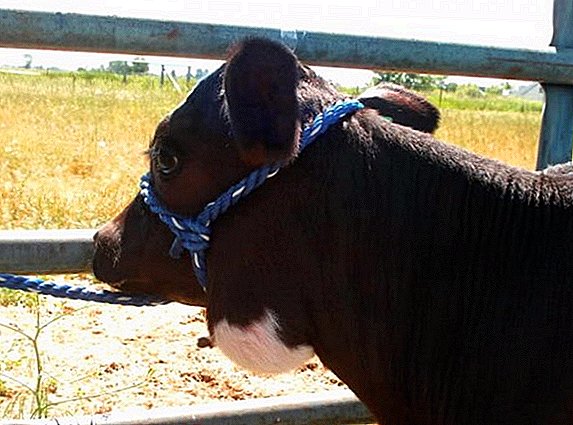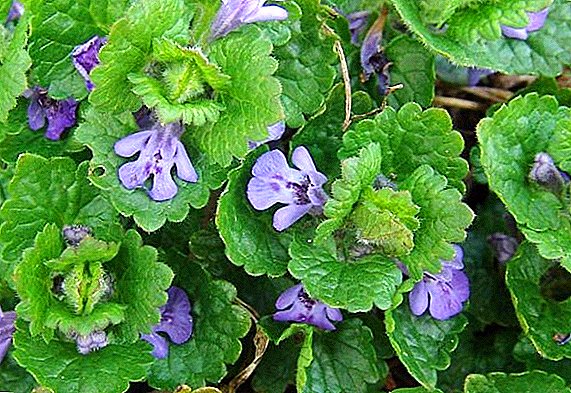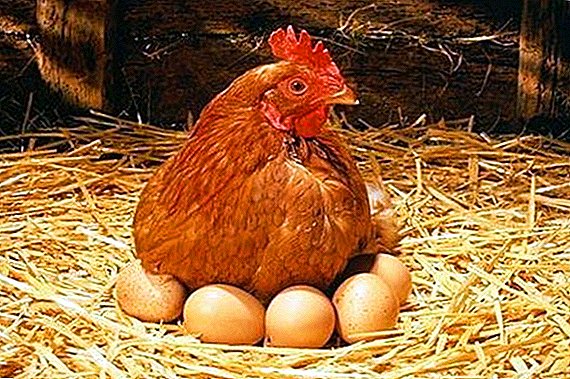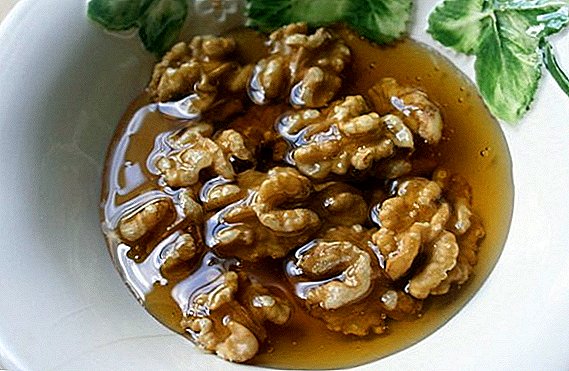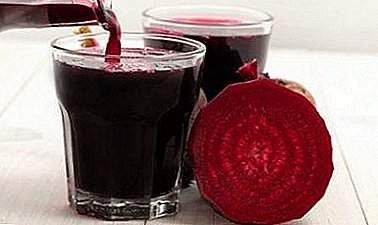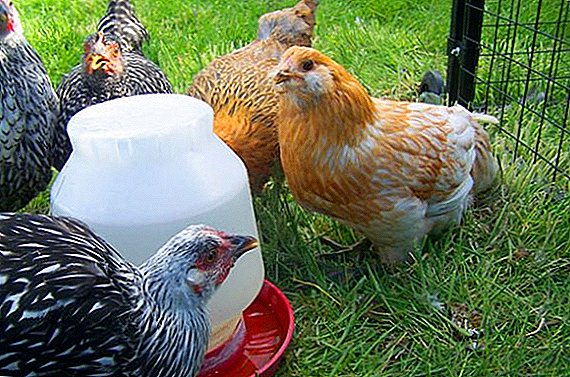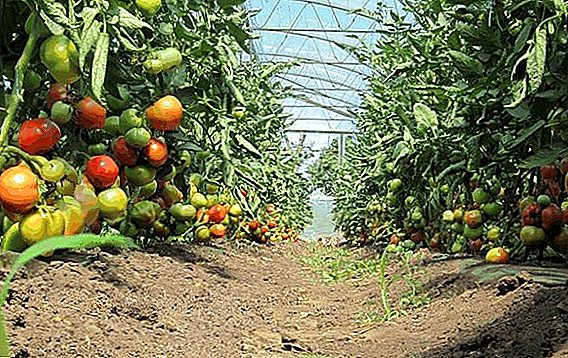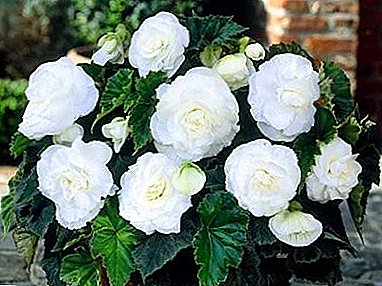
Among indoor plants terry begonia enjoys special attention and popularity. Some flower growers say that it is endowed with some kind of magical attraction. Not surprising. It is enough to see her charming flowers once to fall in love once and for all!
Description, characteristics
A plant of the genus Begonia. It is a small, ornamental, green shrub with numerous carved leaves. The flowers are large, of various shades, shaped like little roses. Due to its unusual name terry rim on flower petalsthat gives them a special affection and showiness.
In nature, begonia is widespread in the territories of Africa, Asia, and America. In domestic culture, it began to grow from the 17th century.
Since then, quite a few varied species and varieties have been obtained, differing in size, color and some peculiarities of care.
In specialized stores, the “Begonia Terry Mix” is more common. Many designers give her preference. It will decorate any flower composition with its bright various colors.
Terry begonia ever flowering is often confused with simple ever-flowering, which lacks a characteristic terry border.
Begonia care terry mix at home
Growing begonia is not difficult, although this process requires attention, care and responsibility.
Landing
In home culture grown with tubers or seeds.
- Tubers are prepared from autumn (before the onset of cold weather). They are taken out of the ground, cleaned, and the stems are removed. Store in a cool place (+8 +11) in tanks with peat or sand. Planted from mid-February to May.
- Seeds are sown in winter in the prepared mixture of leafy land with the addition of peat and sand. The way more troublesome, takes more time.
- If you are going to transplant flowers on an open loggia, in a winter garden or a summer cottage, this should be done in the beginning or in the middle of May. It is important that by this time the snow should have completely disappeared from the site, the frosts ended at night, and in the daytime the earth warmed up well in the sun.
Pot selection
It is advisable to give preference to containers made of environmentally friendly materials - clay or ceramic pots, which have porous walls and well pass oxygen to the roots. Can be grown in wooden vases with good drainage. Choose not a deep pot (10-14 cm).
Plastic does not fit. This is a cheap, dense, "not breathing" material.
The soil

Light, porous soil rich in minerals is suitable. Oxygen must go to the rootsDo not stagnate moisture.
- You can buy ready-made earthen mixture for growing indoor plants. Add sand or brick dust to it for good drainage.
- You can cook it yourself from greenhouse soil for indoor plants, sifted sand and peat.
- At the bottom of the pot must make a tight drainage embankment. Tuberous varieties are particularly prone to gulf.
Watering
- Watch for soil moisture. Between irrigation, the top layer of the earth should dry well. Moisture stagnation can lead to rotting of the roots.
- Use water only at room temperature.
Light mode
Begonia terry loves good, intense lighting. But, does not tolerate exposure to direct sunlight. Its leaves are very sensitive to overheating and burns.
- In the summertime, create ambient lighting conditions.
- If the flower is on the windowsill, periodically turn it with the opposite side to the sun. It promotes uniform growth and flowering.
- In winter, if necessary, use additional artificial lighting.
Thermal mode
- More often air the apartment. At the same time keep the plant away from the draft, cold wind, temperature drop.
- In warm summer weather it will be useful to take out the begonia to fresh air.
- In winter, the temperature in the room should not fall below 15 degrees.
Air humidity

Humidity should be increased. At the same time, it is not recommended to spray the flower, so that brown leaves do not appear on the leaves. Get a floor mounted humidifier, spray the air around the flower or place near a container of water.
Top dressing
It is useful to hold no more than once a month. Special fertilizers are suitable as top dressing.
Pruning
Begonia needs regular pruning, as it grows quickly and the stems begin to rapidly stretch. The pruning procedure is useful for improving flowering, forming the crown of a young plant, rejuvenating and maintaining a decorative look.
- By the first pruning start when the stems grow to 7-8 cm. Shrubs need to give shape. After pruning, watering is temporarily reduced.
- When the side shoots reach 10-12 cm, pruning their tops. This will help wake up the lateral kidneys.
- In the future, you need to monitor the appearance of the flower. Remove dried twigs, leaves and shoots.
- Cutting is carried out only with a sharp knife. Scissors or pruner can not be used. It is useful to cut the cut sections with crushed charcoal to speed up the healing process.
Breeding
Propagated by seed and cutting.
Seed propagation

- Carried out in late January or early February.
- Select a suitable container. Drainage is poured on the bottom and the soil consisting of leafy earth, sand, peat and moistened.
- Seeds are sown on the surface, lightly sprinkling them with earth.
- Grown in greenhouse conditions. Top cover with a glass jar or film. Open once a day so that the seedlings breathe air and moisten when necessary. Contain at a temperature of 22-25 degrees.
- On top of the glass drops will periodically form. They need to wipe with a dry cloth.
- The first shoots will appear in 2 weeks.
Reproduction by cuttings
- Using a knife, cut a healthy, strong leaf from the stem and place it in a container with a moistened substrate (expanded clay, perlite or moss).
- Top cover with a glass jar or polyethylene. You can make holes in the film so that the ventilation process takes place.
- After 2 weeks, the roots will appear. Two weeks later, the polyethylene is removed, and the young rooted sprouts are transplanted.
Plant lifespan
Begonia can be grown as an annual plant, and perennial.
- If you grow a flower at your summer cottage or on an open loggia, the queen plants are transplanted into pots and transferred to the house before the onset of the first frost. In a well-lit area, the begonia can continue to bloom until the spring, and then it is planted again on the site.
- If you grow begonia as an indoor flower, you need to properly maintain care during the rest period.
Transfer
The plant is usually transplanted once a year in early spring. To do this, pick up the capacity of a larger size.
Features of winter care

It is time to rest. Stems and leaves cut off. Rearrange the pot in a dry place with a temperature of 15-17 degrees. Watering is reduced to 3-4 times per month. Do not fertilize. In March, the flower is transplanted into a new soil, begin to water abundantly and make additional feeding.
Bloom
It falls on a warm period of time. Observe proper care in winter. In the spring, provide abundant watering, feed the plant to start abundant flowering.
Pests and diseases
Terry begonia is susceptible to violation of the recommendations for the care and landing. May be subject to disease and pest damage.
- White bloom on the leaves may indicate powdery mildew. In this case, it is necessary to remove the damaged leaves and process the fungicide. Ventilate the room often. Begonia does not like the stuffy room.
- If the leaves form clots and stick to the hands, the flower damages the aphid. From her well helps processing infusion of celandine or onion decoction.
- A thin spider web indicates the defeat of a spider mite. He often appears in an apartment with dry air. Put on a humidifier and air the room more often. Rinse the plant with a damp sponge. You can moisten a cotton ball in a soap solution and carefully assemble the cobweb. In case of severe injury, treatment with insecticides is required.
- The plant can be damaged by gray mold (especially when grown in greenhouses, greenhouses). High temperature with high humidity - a favorable environment for its occurrence. on the tops of the shoots, flowers and leaves are formed white watery specks with grayish bloom. Soon they turn into brown rot. The stalks rot, the leaves curl and blacken. The method of struggle - spraying 1% Bordeaux liquid.
Other problems:
- If the leaves of begonia began to curl, old leaves may die. This is a normal physiological process.
- If the leaves curl and darken, the begonias lack nutrients.
- Fallen and dark leaves - the result of contact with water or too dry air in the room. Flowers can also begin to fall off if water gets on them during watering.
Begonias Terry preferred by many growers. It attracts the attention of the decorative look and charming long flowering. If you decide to grow it at home, be sure to read the basic guidelines for care. Begonia - flower sensitive, demanding attention and care. But, work will be rewarded! If you give her your care, for a long time she will delight you and become a real decoration of the house!
A photo
Below you will see a photo of home care for the ever-flowering terry Begonia:






